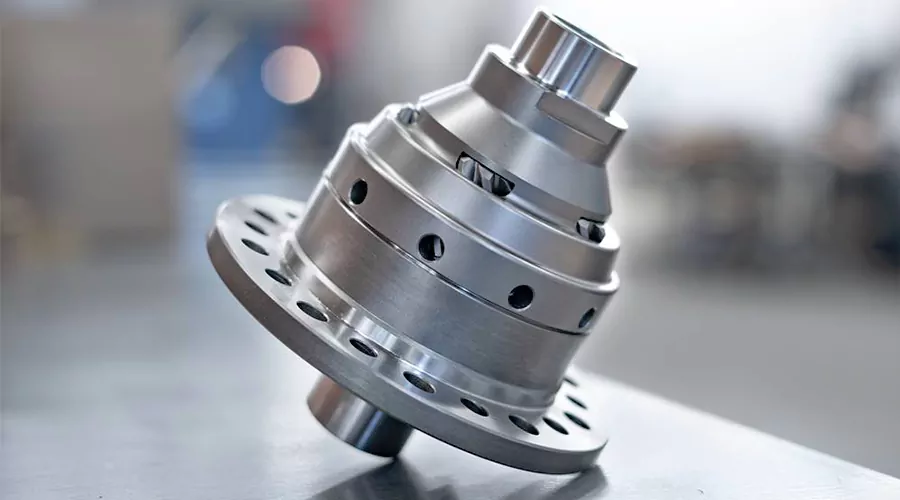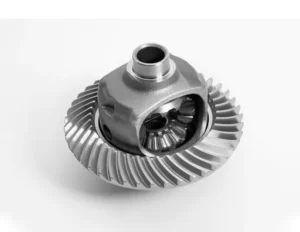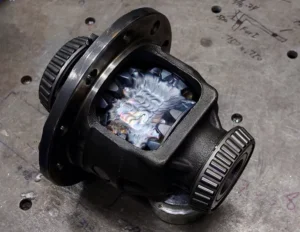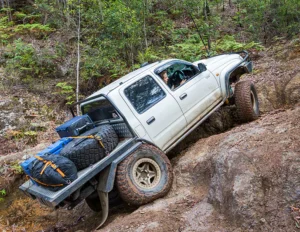Imagine this scenario: your vehicle is parked on an icy surface, and the right wheels are slipping and unable to move forward. This is because the vehicle does not have a Limited Slip Differential (LSD). If one side of the vehicle loses traction, the other side will also be unable to provide enough traction, causing the vehicle to be immobilized.
Now, your vehicle is equipped with a Limited Slip Differential (LSD). Even if the right wheels lose traction, the LSD will intelligently distribute the torque, allowing the left wheels to provide enough traction to move the vehicle, avoiding the embarrassing situation of being stuck on the ice. This example illustrates the importance of Limited Slip Differential in providing traction and enhancing maneuverability.
Introduction to Limited Slip Differential (LSD)

Limited Slip Differential (LSD) is a type of automotive differential that has significant advantages over traditional open differentials in providing better traction and stability. This article will explore why we need Limited Slip Differential (LSD).
Limited Slip Differential (LSD) is a differential that can control the differential speed between the wheels of a vehicle during cornering or driving, providing better traction and stability. Compared with traditional open differentials, LSD can more effectively transfer power to the wheels with traction, improving the performance of the vehicle.
Improving Driving Stability
LSD controls the torque distribution between the two wheels by using a series of devices (such as clutches, gears, etc.). When one wheel loses traction, LSD can automatically adjust the torque distribution to ensure the stability of the vehicle and provide optimal traction.
When the vehicle is turning, the inner tire needs to travel a shorter distance than the outer tire because the inner tire needs to travel a smaller turning radius. However, if the vehicle is equipped with an open differential, it allows the wheels to rotate at different speeds, which may result in uneven torque distribution between the inner and outer tires, leading to the risk of the vehicle slipping or losing control
Limited Slip Differential (LSD) can provide better traction and stability by controlling the differential speed between the wheels. When the vehicle is turning, LSD automatically adjusts the torque distribution, allowing the inner tire to rotate faster and providing more traction. This can reduce the likelihood of the vehicle slipping, making the vehicle easier to control and drive.
Providing Better Traction
On surfaces with low traction, vehicles are prone to waste torque due to slipping, resulting in inefficient power transfer to the ground. Limited Slip Differential (LSD) solves this problem by controlling the differential speed between the wheels. When one wheel begins to slip, LSD automatically adjusts the torque distribution, transferring more power to the wheel with traction, preventing wheel slip, and providing better traction. This can effectively utilize the torque provided by the engine, reduce torque waste on low-traction surfaces, and improve the traction and driving efficiency of the vehicle.
Enhancing Off-Road Performance
On rough roads, vehicles often encounter irregular bumps and uneven surfaces. LSD can ensure that both wheels of the vehicle maintain good traction, providing stable traction and making it easier for the vehicle to pass through these sections, reducing the instability caused by bumps.
On sloping roads, LSD can prevent the vehicle from sliding due to one wheel losing traction. By intelligently controlling torque distribution, LSD can ensure that both wheels of the vehicle provide sufficient traction, making it easier for the vehicle to climb slopes and improve off-road performance.
On muddy roads, LSD can help vehicles better cope with insufficient traction caused by muddy road surfaces. By limiting wheel slip, LSD can ensure that the vehicle has better traction on muddy roads, providing better stability and control, making it easier for your vehicle to pass through these sections.
If you have any questions or need help with Limited Slip Differential or other automotive components, please feel free to contact us, and we will be happy to provide support and answer your questions.



